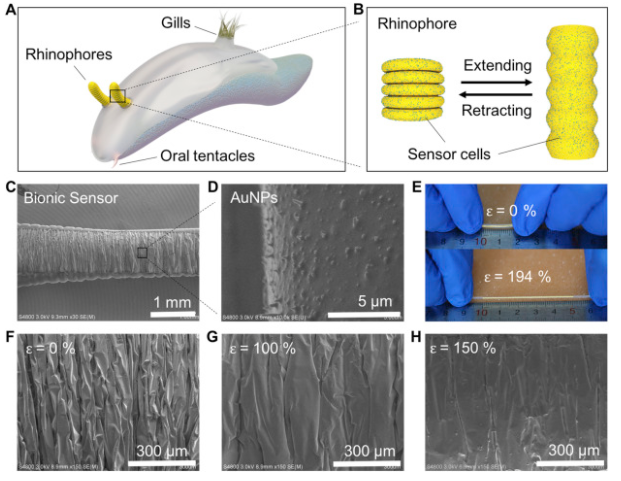文章专利

- 地址: 江苏省苏州市苏州工业园区若水路398号
- 邮箱: tzhang2009@sinano.ac.cn
- 电话: 86-512-62872706
- 传真: 0512-62603079
- 网址: http://nanosensor.sinano.ac.cn

Rhinophore bio-inspired stretchable and programmable electrochemical sensor. Biosensors and Bioelectronics,Volume 142, 1 October 2019, 111519
Shuqi Wang,Chunyan Qu,Lin Liu,LIanhui Li,Sujie Qin,Ting Zhang*

Abstract
Rhinophore, a bio-chemical sensory organ with soft and stretchable/retractable features in many marine molluscs species, exhibits tunable chemosensory abilities in terms of far/near-field chemical detection and molecules' source orientation. However, existing artificial bio-chemical sensors cannot provide tunable modality sensing. Inspired by the anatomical units (folded sensory epithelium) and the functions of a rhinophore, this work introduces a stretchable electrochemical sensor that offers a programmable electro-catalytic performance towards glucose based on the fold/unfold regulation of the gold nanomembrane on an elastic fiber. Geometrical design rationale and covalent bonding strategy are used to realize the robust mechanical and electrical stability of this stretchable bionic sensor. Electrochemical tests demonstrated that the sensitivities of the as-prepared bionic sensor exhibit a linear relationship with its strain states from 0% to 150%. Bio-inspired sensory functions are tested by regulating the strain of the bionic sensor. The sensor achieves a sensitivity of 195.4 μA mM−1in a low glucose concentration range of 8–206 μM at 150% strain for potentially far-field chemical detection, and a sensitivity of 14.2 μA mM−1 in a high concentration range of 10–100 mM at 0% strain for near-field chemical detection. Moreover, the bionic sensor performs the detection while extending its length can largely enhance the response signal, which is used to distinguish the molecules’ source direction. This proposed bionic sensor can be useful in wearable devices, robotics and bionics applications which require diverse modality sensing and smart chemical tracking system.
Full article:https://www.sciencedirect.com/science/article/pii/S0956566319305986?via%3Dihub
